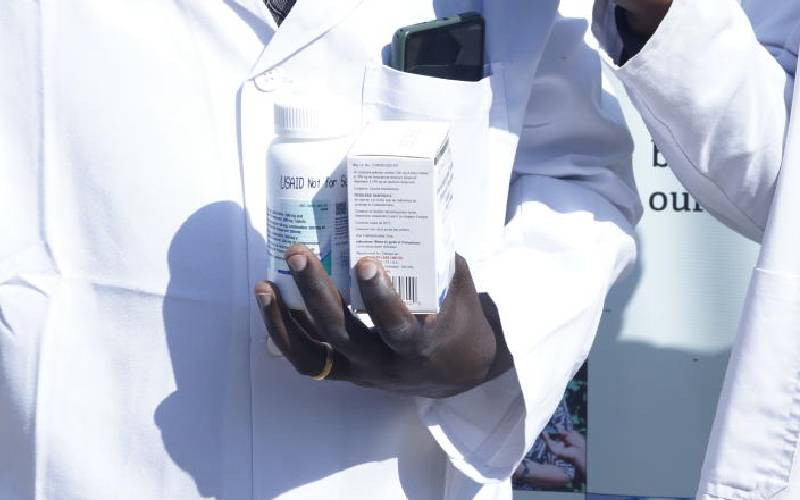By MICHAEL MUGWANG’A
NAIROBI, KENYA: Banks are reporting increasing cases of fraud involving millions of shillings through Automated Teller Machines (ATM). And unlike bank robberies where the financial institutions bear the brunt, ATM-related crimes target individuals and their money. In most cases, the banks are not directly liable for losses incurred as a result of ATM fraud.
Cases where criminals hold their victims at ransom, seize their cards and force them to reveal their personal identification numbers (PIN) and then go ahead to withdraw from ATM slots are on the increase.
Then there is what bankers call ‘card skimming.’ Diamond Trust Bank defines skimming as a situation whereby gadgets known as ‘skimmers’ are inserted in the ATM to steel ATM card details so that the schemer can develop a duplicate card and withdraw all your money.
Bank’s Website
According to information on the bank’s official website “Most of what the press call ATM Fraud is actually PIN Fraud (or Debit Card Fraud), where counterfeit cards are used to withdraw cash from ATMs by fraudsters employing PINs compromised at Point of Sales terminals in the retail environment.”
A new trend is, however, emerging where criminals hang around ATM lobbies and wait for unsuspecting bank customers to come, withdraw and then they strike relieving them of the money and even forcing them to withdraw some more.
And now banks are putting in place measures to reduce such cases by ensuring round the clock security manpower and making sure that ATM lobbies are well lit. Barclays Bank says it is leaving nothing to chance in its effort to protect its customers’ money. Speaking to Crime Watch last Friday, the bank’s Chief Operating Officer in Kenya Abdi Mohamed said they had formed a fraud prevention team whose express objective is to fight ATM-related crime.
“We also have a fraud prevention team that monitors all ATM transactions on a 24-hour basis using a fraud prevention technology platform,” said Mohamed. A top official at Co-operative Bank who requested not to be named due to the sensitivity of the bank’s security, told Crime Watch the bank was installing cameras at all ATM outlets across the country in an effort to ensure criminals are traced when a case is reported.
“Unlike previous cameras that were installed overhead, the new gadgets are fixed such that they are at eye level with the user. This ensures that even when a criminal puts on a cap, the camera is able to capture his face and eyes,” said the official adding: “We have invested quite a lot in ATM security, including employing security guards working 24 hours. We have also linked ATM transactions with customers’ mobile phones so that any transaction done is communicated.
According to Mohamed, transactions at ATM lobbies are always monitored and recorded.
Security of customers
“At Barclays, we take the safety and security of our customers seriously. Barclays ATMs have an anti-skimming security system that ensures customers’ assets are safe. Our ATMs are also monitored through state-of-the-art CCTV and ATM lobbies are manned by security personnel to ensure security of our customers while transacting at our ATMs. Through these measures among others, we have ensured that ATM fraud is contained and that our customers have peace of mind as they transact through our countrywide ATM network,” he says. But to reduce cases of falling victim to ATM fraud and other related crimes, experts still emphasise personal caution and immediate report of either loss of card or incidents of such crime. According to DTB, ATMs still remain one of the safest ways of carrying and transacting in money.
“It is safer to visit a machine when you need cash rather than carry around large sums of money. If your money is stolen you are unlikely to get it back. If you are unfortunate enough to be a victim of this type of crime you will get your money back from the bank, unless you have acted negligently,” the bank says on its website.
Most criminals commit ATM crimes by either card swapping, card skimming and vandalism. To effect swapping, according to DTB, criminals distract their target as they enter their PIN. They then swap the user’s card.
Stay informed. Subscribe to our newsletter
Card skimming typically involves tampering with an ATM card by placing an additional card reader over the ATM’s card reader. In conjunction with a hidden camera, this provides fraudsters with your card details and PINs. ATMs are vandalised to force you to use ATMs in poorly lit, quiet areas where it is easier to commit crime and to trap your card in the ATM’s card reader, giving you the impression that the machine has swallowed your card.
Criminals do this so they can watch as you key in your PIN from a distance or offer you the use of a cellphone to cancel your card. They then dial an accomplice who claims to be a bank official and who pretends to cancel your card on the telephone and asks you for your PIN.
Never disclose your PIN.
 The Standard Group Plc is a
multi-media organization with investments in media platforms spanning newspaper
print operations, television, radio broadcasting, digital and online services. The
Standard Group is recognized as a leading multi-media house in Kenya with a key
influence in matters of national and international interest.
The Standard Group Plc is a
multi-media organization with investments in media platforms spanning newspaper
print operations, television, radio broadcasting, digital and online services. The
Standard Group is recognized as a leading multi-media house in Kenya with a key
influence in matters of national and international interest.
 The Standard Group Plc is a
multi-media organization with investments in media platforms spanning newspaper
print operations, television, radio broadcasting, digital and online services. The
Standard Group is recognized as a leading multi-media house in Kenya with a key
influence in matters of national and international interest.
The Standard Group Plc is a
multi-media organization with investments in media platforms spanning newspaper
print operations, television, radio broadcasting, digital and online services. The
Standard Group is recognized as a leading multi-media house in Kenya with a key
influence in matters of national and international interest.








